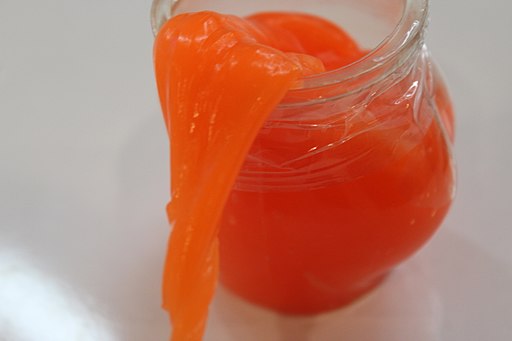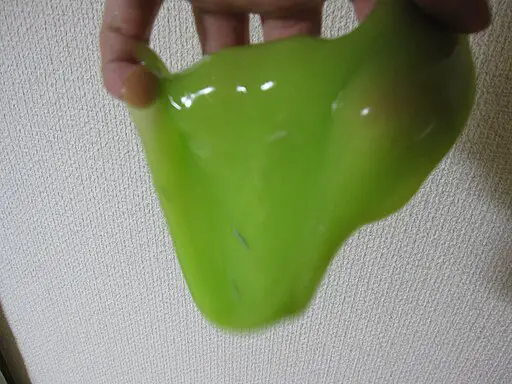Slime is a gooey, stretchy substance made from liquid polymers, while putty is denser, moldable, and often silicone-based.
What is Slime?

Slime is a stretchy and gooey substance that can be made from various ingredients like glue, borax, or cornstarch mixed with water. It has a slimy texture and is known for its ability to stretch and make satisfying squishy sounds when manipulated.
One of the defining characteristics of slime is its ability to stretch and pull without easily breaking apart. It can be molded into different shapes or stretched between your fingers, allowing for countless creative possibilities. Some types even produce satisfying sounds when squeezed or squished!
What is Putty?

Putty is more firm and malleable. It usually comes in small containers and can be shaped into different forms. Putty has a smoother texture compared to slime and doesn’t ooze or flow as much. It can bounce, tear apart, or even be molded into intricate shapes.
One of the most notable characteristics of putty is its stretchiness. Unlike slime, which tends to be more gooey and sticky, putty can be pulled and stretched without breaking easily. It also retains its shape once molded or shaped, making it great for creating intricate designs or sculptures.
Another difference between putty and slime lies in their texture. Slime typically has a softer and more malleable consistency, while putty has a firmer and denser feel to it. This gives putty a unique tactile experience that many people find satisfying.
Slime Vs. Putty – Key differences
| Aspect | Slime | Putty |
|---|---|---|
| Texture | Typically a slimy, gooey, and viscous substance | Dense, moldable, and elastic |
| Composition | Made from a mixture of liquid polymer, usually with added ingredients like glue and activators | Composed of a thicker, often silicone-based material |
| Stretchiness | Generally more stretchy and can be stretched and pulled apart | Less stretchy and tends to hold its shape better |
| Consistency | Has a less rigid consistency, flowing and conforming to its container | Holds its shape and can be molded into various forms |
| Stickiness | Can be sticky, especially when first made, but often becomes less sticky with play | Not as sticky and usually maintains its non-sticky properties |
| Sound and Texture Play | Often used for ASMR and sensory play due to its squishy, gooey properties | Also used for sensory play but provides a different tactile experience |
| Color and Variety | Available in various colors and can include add-ins like glitter and beads | Comes in a range of colors and can also have special effects like color-changing or magnetic putty |
| Cleanliness and Residue | May leave residue on hands and surfaces but is generally easy to clean up | Tends to leave less residue and is easier to handle without sticking to surfaces |
| Popular Uses | Commonly used for making DIY projects, stress relief, and sensory activities | Used for stress relief, hand exercises, and sculpting activities |
| Examples | Slime examples include classic slime, fluffy slime, and crunchy slime | Putty examples include therapy putty, magnetic putty, and glow-in-the-dark putty |
Image Credits
Featured Image By – Ciphers, CC BY-SA 3.0 , via Wikimedia Commons
Image 1 By – Nataliatarkh, CC BY-SA 4.0 , via Wikimedia Commons
Image 2 By – It is not permitted to sell my photos with StockAgencies from Pixabay









